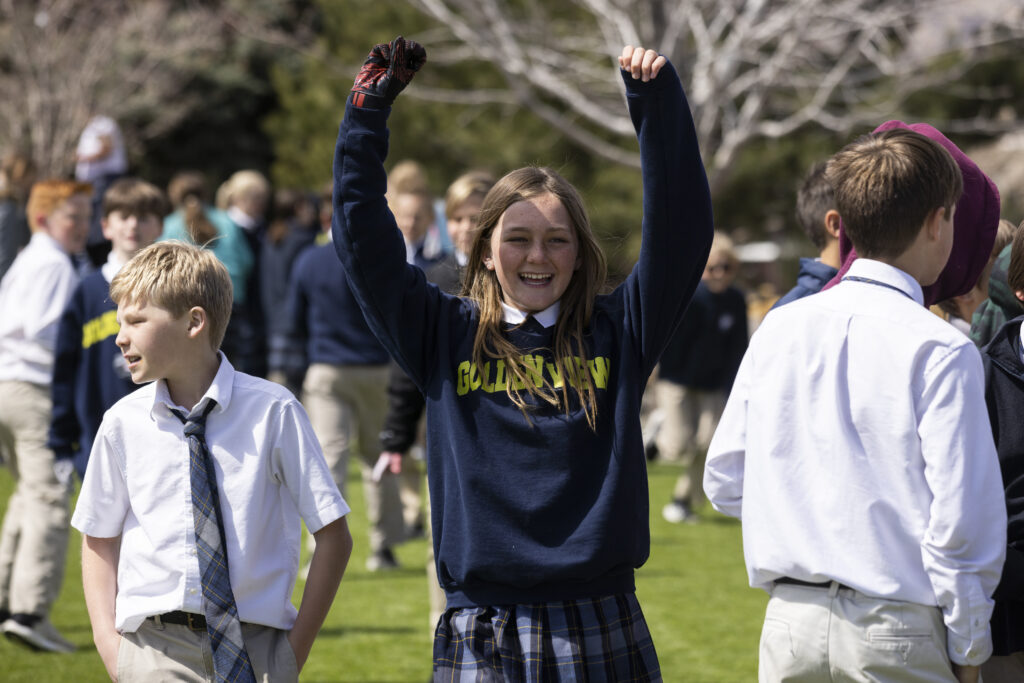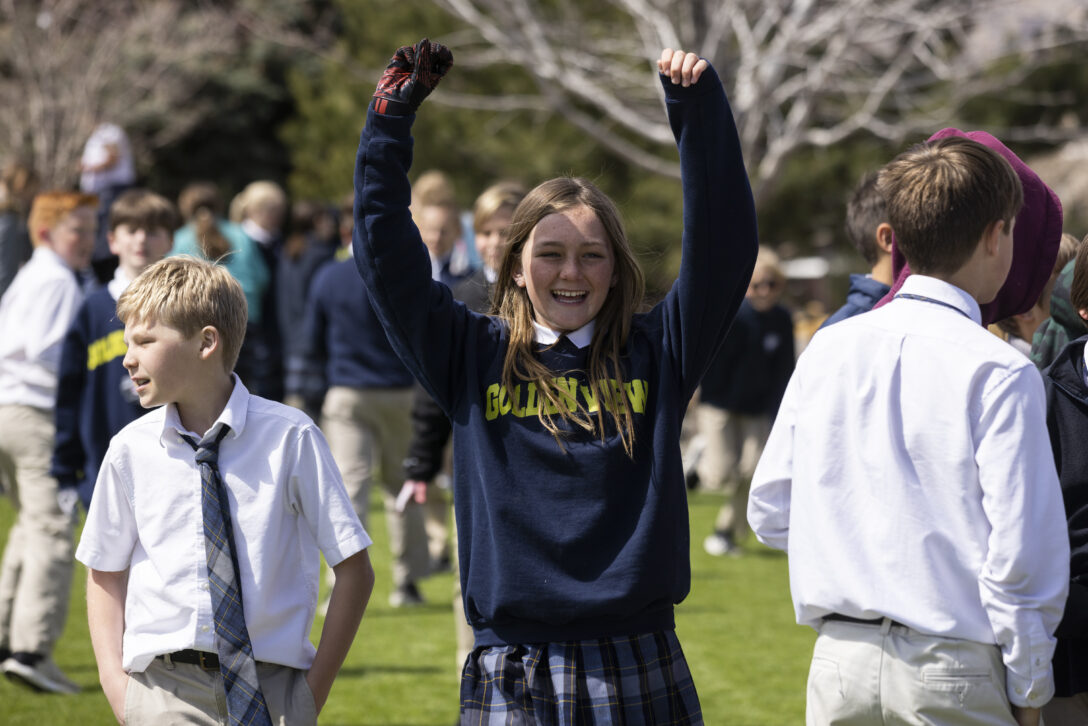Families attend my classical charter school for many reasons. Our curriculum brings students into contact with the greatest books, ideas, and role models in Western civilization. Our students have incredible success in their collegiate years after the education they receive from us. Our families pay no tuition and need not fit into any social, economic, or political mold in order to attend our school. But the number one reason that parents tell us they entrust us with their children has to do with our school’s strong sense of shared responsibility and community. They know that their child is known and loved here, and that is perhaps the greatest good we can give a parent. Our families have chosen us as a partner in the slow, deliberate task of raising up children to become good young men and women.

This process of education takes a long time, and that is why many classical schools are K-12. How many of us, though, involve ourselves in a child’s education for more than one or two of those thirteen years? It is natural for the 1st grade student to visit her Kindergarten teacher, but as time passes, she stops visiting, and while the teacher never forgets her, she no longer plays an active role in her education. A decade later, will her American literature teacher know what she was like in Kindergarten, or will the student have to develop another new relationship with another new teacher once again? We teachers miss incredible opportunities to invest in all students at our school when we silo ourselves into a particular grade band or one particular wing of our schools. As K-12 schools, we ought to strive towards a truly cohesive community in which seniors still seek their elementary teachers for mentorship and in which third graders know the calculus teacher by name.
I would like to respond to a few possible objections to my claim before explaining it further. “I am too busy with my own problems to visit another class,” you may say. I understand. I cannot recall ever being at school wondering what to do now that all my tasks are done. Instead, I’ve found that I always must prioritize some good thing (say, finishing grading these tests) over another good thing (say, writing a blogpost about K-12 schools). My argument is not that you have time to visit other students, it is that you ought to make that time.
“But the big kids scare me,” or “I’m just not good with little kids,” you may say. You may not know how to connect with teenagers, and you act awkward around them. Perfect. Teenagers don’t understand teenagers and act awkwardly around each other, and you will fit right in. Their teacher, who is more comfortable with them, will be there too, and your lower-school habits and idiosyncrasies may bring back fond memories of ‘the good old days’ to a teenage student flirting dangerously with apathy and cynicism. You may not know how to talk to little ones or the chants and hand signals that magically calm the crazy of Kindergarten, but their teacher will still be in the room. And besides, you are someone new to love for the little ones, and there is nothing they love more than a potential new friend. You do not have to be good with children of every age group, you just need to be with children of every age group.
“Okay, but how do I do it? What does helping look like?” you may finally ask. I have spent the last several years finding ways to infiltrate our lower school and middle school in between my Precalculus and Calculus classes. Here are a few ideas to try.
1. Get involved in clubs or sports in grades you do not teach. Students love their coaches and leaders, often trusting them with different parts of themselves (the sillier side, the more aggressive side, the confident side) than those they trust to their teachers. You also can share different passions and interests of yours than the four walls of your classroom may allow. Ideally this means leading the club or coaching a team, but even if you cannot commit to leading or coaching, make an effort to go a few times to club meetings or watch a few games. (And stay long enough to say hello after the game!) Especially for lower-school teachers looking to continue investing in upper-school students, extracurriculars can build healthy, meaningful relationships that span across many different ages.
2. If you are an upper-school teacher looking to meet lower-school students, offer to read a story to the younger grades. Many classes have a weekly ‘mystery reader’ (often a parent or grandparent) that reads a story to them. Dust off your old Frog and Toad stories or borrow a copy of Peter Rabbit, practice your best animal voices, and ask your kindergarten team if you can visit. The answer will be yes, and the students will be enthralled with your story. More than that, they will remind you for the next month that you read a story to them once, and they will ask you when you are coming back.
3. Trade carpool or study hall one day per week and plan a fun activity for part of it. Nobody likes carpool or study hall every day: we get tired and frustrated at the seeming lack of productivity and having to tell the same students to sit quiet or look for their car. Rather than wallow in self-pity, trade your duties. Make Mondays the day you play Wordle with the fourth graders at the beginning of carpool, while the fourth grade teacher talks fantasy football for the first ten minutes of freshmen study hall. Students will appreciate the change in their schedule and look forward to your weekly meetings.
4. Offer to watch a recess or lunch duty. Much like carpool or study halls, doing the same supervision tasks can get tedious. Give a colleague a break by offering to sit with their class at lunch, then ask the students silly questions like “what color is each month” or “which animals would be the best soccer players.” Go play football or four square at recess with students you don’t teach, while their teacher can go get another cup of coffee. Things like these build memories, turn into dinner table conversations, and make the school a more connected whole.
5. Get a yearbook, pick a grade or look for siblings of your students, and learn some names. Everyone loves to hear his or her name spoken, to be seen and known. If all you can do is learn the names of the siblings of your students and say hello to them by name as you pass in the hallways, that can be enough to make students feel loved and appreciated by the entire school.
6. Teach a guest lesson in your area of expertise. This one sounds the scariest but it also can be the most rewarding. The first grade loves when I come to teach them about number bonds, and they love even more when I tell them that I use part-part-whole to explain calculus to my seniors. I can explain math in a new way, different from their teacher, and that can provide a sense of wonder or spark new discoveries. It also gets them excited to take ‘big kid math’ someday because they have already met one of the older teachers. On the other hand, upper-school students would love to see their old teachers come back and share the depth of knowledge they never saw in lower school. They will be amazed that you knew so much about the Civil War and never had a chance to share that knowledge before. The middle school students will quietly appreciate the silly extra voices when you read and the fun of your literature lesson, now that their classes are adjusting to a more serious and academic tone. It will be a welcome reminder that learning was once, and still is, fun.
7. Plan a cross-grade class for a day. Make the seventh graders teach second graders about fractions in buddies, or have the third grade teach tenth grade about knights and chivalry with poster presentations. This takes a bit of coordination, but it can even be an opportunity to invite some parents into the mix. Our fourth and fifth grades do a Living Library each year, where students prepare short presentations about historical figures. Parents, younger kids, and older kids all take time to ask questions to “Abe Lincoln” and “Amelia Earhart.” A big event like this may not always be do-able, but a smaller one-day visit can probably be prepared and executed in a week. The students will love the chance to see each other and learn from each other.
I would like to leave you with a final argument. Until now I have argued that this involvement across all grades provides immense benefit to the students at your school, but it will also edify you and your fellow teachers. By learning from our lower-school teachers, I have improved my own classroom management greatly. I re-discovered the value of manipulatives and visuals in math class, and some of the most frustrating lessons to teach have become some of the most enjoyable and engaging. My colleagues in lower school tell me they have never been so confident and excited to teach math now that they know where their students are going. We share ideas, build bonds, and provide for each other a breath of fresh air from the staleness of an isolated classroom.

